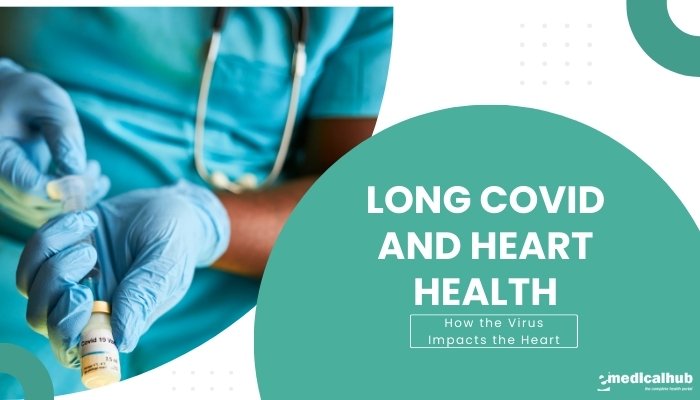Introduction
Prostate cancer is one of the most common malignancies among men worldwide. The disease often grows slowly and may not manifest symptoms until later stages. Early detection can identify aggressive forms that need prompt treatment, but screening must be balanced against the risk of overdiagnosis and potential side effects from unnecessary interventions.
Multiple guidelines exist for prostate cancer screening, often leading to confusion about when and how to get tested.
This article provides an overview of prostate cancer basics, risk factors, and current screening methods (including the prostate-specific antigen [PSA] test and digital rectal exam [DRE]).
We will explore major clinical guidelines, pros and cons of screening, and practical steps men can take to discuss testing options with healthcare providers. Armed with this knowledge, individuals can make informed decisions about whether and when to pursue screening.
Understanding Prostate Cancer
The Prostate Gland
- Location: A walnut-sized gland situated below the bladder and surrounding the urethra.
- Function: Produces seminal fluid, aiding sperm transport and fertility.
- Changes with Age: The prostate often enlarges in older men (benign prostatic hyperplasia, or BPH), which can affect urinary function but is not cancer.
Nature of Prostate Cancer
- Prevalence: Among the most commonly diagnosed cancers in men globally, particularly after age 50.
- Growth Patterns: Can range from indolent (very slow-growing) to aggressive forms needing urgent therapy.
- Hormone Dependence: Most prostate cancers rely on androgens (like testosterone) to grow.
Risk Factors
- Age: Risk rises significantly after 50, with most diagnoses in men over 65.
- Family History: Having a father or brother with prostate cancer can double or triple one’s risk, especially if diagnosed at a younger age.
- Race/Ethnicity: African American men face a higher incidence and mortality. Caribbean men of African descent also see elevated risk.
- Genetics: BRCA1/BRCA2 mutations, among others, can raise susceptibility.
- Lifestyle: Diets high in red or processed meats, obesity, and sedentary habits may increase risk, though data is less conclusive than for other factors.
Key Point: Not all prostate cancers present a significant threat. Screening identifies both slow and aggressive tumors, prompting nuanced decisions about how to proceed.
The Rationale and Controversies of Screening
Why Screen for Prostate Cancer?
- Potential for Early Detection: Aggressive cancers caught in earlier stages typically have better outcomes, sometimes requiring less invasive interventions.
- Curative Treatments: Men with localized disease can often opt for surgery or radiotherapy with curative intent, especially if discovered early.
- Reduced Mortality: Large-scale studies, like the European Randomized Study of Screening for Prostate Cancer (ERSPC), show that PSA-based screening can reduce prostate cancer deaths, albeit modestly.
Concerns and Drawbacks
- Overdiagnosis: Many screened tumors are slow-growing and might never cause harm within a man’s lifetime. Detecting these can lead to unnecessary treatments (like radical prostatectomy or radiation).
- Overtreatment Complications: Incontinence, sexual dysfunction, or bowel issues from curative treatments significantly impact quality of life.
- False Positives/Negatives: Elevated PSA can stem from benign conditions (e.g., BPH, prostatitis). Meanwhile, normal PSA does not fully exclude cancer.
- Anxiety and Cost: Additional imaging, biopsies, or repeated testing can be psychologically stressful and add financial burden.
Balancing Pros and Cons
- Individual Decision: Guidelines emphasize discussing personal risk factors, potential benefits, and possible harm with a healthcare provider. The approach is more personalized than in earlier “screen every man” eras.
- Active Surveillance: Many men with low-risk or low-volume disease pursue “active surveillance,” deferring active treatment unless signs of progression appear.
Major Guidelines for Prostate Cancer Screening
US Preventive Services Task Force (USPSTF)
- Age 55–69: The USPSTF recommends individual decision-making regarding PSA screening, giving it a “C” grade. Men should weigh benefits (reduced mortality) vs. harms (overdiagnosis/overtreatment).
- Age 70 and Older: The USPSTF generally recommends against routine screening (Grade D), citing fewer benefits and more potential harms.
American Urological Association (AUA)
- Age 55–69: Shared decision-making is encouraged, with screening intervals of every two years or so if chosen.
- High-Risk Groups: African American men or those with family history might begin at 40–54, again with individualized discussion.
American Cancer Society (ACS)
- Age 50+: Average-risk men who expect to live at least 10 more years can consider PSA screening after a discussion of pros/cons.
- High-Risk: Start around 45 if at higher risk (e.g., African American men or immediate family history).
- Very High-Risk: At 40 for those with multiple first-degree relatives affected at early ages.
International Variations
- Some Countries: Implement population-based screening or more explicit guidance. Others discourage routine mass screening due to cost-benefit concerns.
- Consensus: Most guidelines converge on an individualized approach, factoring in life expectancy, risk, and patient values.
Methods of Screening
PSA (Prostate-Specific Antigen) Test
Understanding PSA
- PSA: A protein produced by both normal and malignant prostate cells.
- Normal Ranges: Typically, a total PSA below 4.0 ng/mL is considered “normal,” but age-adjusted ranges exist.
- Variability: Benign conditions (BPH, prostatitis) or recent activities (ejaculation, digital exam) can influence PSA levels.
PSA Interpretations and Cutoffs
- Grey Zone: PSA 4–10 ng/mL can indicate possible cancer, but many men in this range do not have malignancy.
- PSA >10: Higher suspicion but not definitive. Further tests (MRI, biopsy) clarify.
- PSA Velocity: Rate of rise. A rapid increase might raise suspicion for significant cancer, though not always standardized.
Digital Rectal Exam (DRE)
- Procedure: A gloved finger is inserted into the rectum to feel the prostate for lumps, asymmetry, or hardness.
- Utility: It can detect posterior or lateral lumps missed by PSA alone, though its sensitivity is limited.
- Declining Use: Many guidelines put less emphasis on routine DRE because it can be subjective and uncomfortable, but it remains a part of some screening protocols.
Emerging Tools
Prostate MRI and Biomarkers
- MRI: Multiparametric MRI can visualize suspicious lesions, guiding targeted biopsies. Usually used after abnormal PSA results, not typically for primary screening.
- Biomarkers: Tests like the PHI (Prostate Health Index) or 4Kscore incorporate additional markers (like free PSA, hK2) to refine cancer risk.
Who Should Consider Screening and When?
Average-Risk Men
- General Range: Start a conversation with a provider around age 50–55.
- Life Expectancy: Men with <10 years life expectancy from comorbidities may choose to avoid screening due to minimal net benefit.
Higher-Risk Groups
- African Americans: Potentially begin discussing screening at age 40–45.
- Positive Family History: Men with father or brother who had prostate cancer at younger than 65 might consider earlier or more frequent tests.
- Genetic Predispositions: BRCA2 mutation carriers or Lynch syndrome might be advised to start earlier screening.
Interval of Re-Screening
- Every 2 Years: Often recommended if the PSA is normal and no new risk factors appear.
- Annual: Some prefer annual testing if borderline PSA levels or changes in DRE present. This is decided case-by-case.
Shared Decision-Making
- Discussing Values and Concerns: Evaluate the potential anxiety of false positives, the risk of biopsy complications, or worry over missing an aggressive cancer.
- Informed Choice: Men comfortable with the possibility of a false alarm or overdiagnosis might prefer screening; others less willing to risk invasive procedures may decline.
Understanding Screening Outcomes
False Positives and Follow-Ups
- Elevated PSA: If results show high levels, next steps might include a repeat test, advanced imaging, or a biopsy. Not all men with elevated PSA have cancer.
- Biopsy Risks: Include bleeding, infection, or urinary difficulties. Anxiety from waiting for pathology results is also common.
Diagnosing Prostate Cancer and Its Classification
- Gleason Score/Grade Group: Pathologists grade tumor aggressiveness by examining prostate tissue.
- Stage: Determined by tumor extent, lymph node involvement, metastases.
Active Surveillance vs. Active Treatment
- Active Surveillance: Used for low-risk, slow-growing tumors. Involves periodic PSA checks, possible repeat biopsies or MRIs, intervening only if signs of progression appear.
- Definitive Treatments: Surgery (radical prostatectomy), radiation therapy, or advanced therapies. But these can carry side effects like incontinence or erectile dysfunction.
Reducing the Risk of Prostate Cancer
Diet and Exercise
- Healthy Weight: Obesity correlates with more aggressive forms.
- Nutrient-Rich Foods: Fruits, vegetables, whole grains, and moderate healthy fats (Mediterranean diet).
- Physical Activity: At least 150 minutes/week of moderate-intensity or 75 minutes of vigorous aerobic exercise, plus some resistance training.
Avoiding Tobacco and Excess Alcohol
- Smoking: Associated with more lethal forms of many cancers; though direct links to prostate cancer risk are less strong, it affects overall health.
- Alcohol: Overconsumption might increase inflammation and hamper immunity.
- Moderation: If drinking, do so responsibly, abiding by standard guidelines.
Considering Supplements?
- No Definitive Pill: Large studies show no conclusive proof that supplements like vitamin E, selenium, or others prevent prostate cancer.
- Consult Professionals: Some men with nutritional deficiencies might benefit from certain vitamins, but general prophylaxis is unsubstantiated.
Stress and Sleep
- Chronic Stress: Might disrupt immune function or hormone levels.
- Adequate Rest: Sleep is crucial for overall endocrine and metabolic health, possibly influencing cancer risk indirectly.
Questions to Ask Your Healthcare Provider
- Am I a candidate for prostate cancer screening?
- How do my risk factors, like family history or race, impact the decision?
- Which screening approach (PSA only, or PSA + DRE) do you recommend?
- How reliable is the PSA test, and what if the result is elevated?
- What about potential side effects or false alarms?
- If I have borderline results, would advanced tests or imaging be necessary?
These questions help clarify personal risk, screening intervals, and possible outcomes of any abnormal results.
Potential Future Developments
Genomic Markers and Personalized Screening
- Genetic Testing: Identifying men with higher risk from certain gene mutations might refine who needs earlier, more intensive screening.
- Biomarker Panels: Adding advanced biomarkers beyond PSA may predict aggressiveness more accurately.
MRI for Primary Screening
- Non-Invasive Imaging: Some research suggests multiparametric MRI might eventually be used to reduce false positives from PSA alone.
- Cost and Accessibility: Widespread use is currently limited by expense, but it may become more common for abnormal PSA triage.
Liquid Biopsy
- Circulating Tumor Cells or DNA: Evolving technology may one day detect early tumor signals in the bloodstream, further customizing screening.
Conclusion
Prostate cancer screening is a nuanced, evolving topic. The predominant tools—PSA testing (often accompanied by DRE)—can detect disease at earlier stages, potentially reducing mortality. Yet screening also raises concerns about overdiagnosis and overtreatment of indolent cancers. Current guidelines across various health authorities encourage men in their 50s or older, or those at higher risk (e.g., strong family history, African American background), to discuss testing pros and cons with a healthcare provider. A personal approach, factoring in life expectancy, risk tolerance, and personal values, helps ensure that men can choose screening if it aligns with their health priorities.
Beyond screening, lifestyle measures such as regular exercise, maintaining a healthy diet, and managing weight likely contribute to better prostate health. If an elevated PSA is detected, additional diagnostics—ranging from repeat testing to advanced imaging—help refine the path forward. Ultimately, the best route for each man lies in shared decision-making with a knowledgeable medical professional, ensuring that any steps taken serve both well-being and peace of mind.
References
- US Preventive Services Task Force. Screening for Prostate Cancer: US Preventive Services Task Force Recommendation Statement. JAMA. 2018;319(18):1901-1913.
- American Urological Association. Early Detection of Prostate Cancer: AUA Guideline. 2018.
- Mottet N, van den Bergh RCN, Briers E, et al. EAU – ESTRO – ESUR – SIOG Guidelines on Prostate Cancer. 2021.
- Wilt TJ, Harris RP, Qaseem A. Screening for Cancer: Advice for High-Value Care From the American College of Physicians. Ann Intern Med. 2015;162(10):718-725.
- Schroder FH, Hugosson J, Roobol MJ, et al. Screening and prostate-cancer mortality in a randomized European study. N Engl J Med. 2009;360(13):1320-1328.
- Andriole GL, Crawford ED, Grubb RL, et al. Mortality results from a randomized prostate-cancer screening trial. N Engl J Med. 2009;360(13):1310-1319.
- Dall’Era MA, Cooperberg MR, Chan JM, et al. Active surveillance for early-stage prostate cancer: review of the current literature. Cancer. 2008;112(8):1650-1659.
- Carlsson SV, Kattan MW. The management of low-risk prostate cancer. Urol Clin North Am. 2017;44(4):611-621.
- Carroll PH, Mohler JL. NCCN Guidelines Updates: Prostate Cancer and Prostate Cancer Early Detection. J Natl Compr Canc Netw. 2018;16(5S):620-623.
- Heijnsdijk EA, de Carvalho TM, Auvinen A, et al. Cost-effectiveness of prostate cancer screening: A systematic review of decision-analytical models. BMC Cancer. 2015;15:157.
- Sanda MG, Cadeddu JA, Kirkby E, et al. Clinically localized prostate cancer: AUA/ASTRO/SUO Guideline. J Urol. 2017;198(2):520-529.
- Shariat SF, Roehrborn CG. Using biopsy to detect prostate cancer. Rev Urol. 2008;10(4):262-280.
- Ahmed HU, El-Shater Bosaily A, Brown LC, et al. Diagnostic accuracy of multi-parametric MRI and TRUS biopsy in prostate cancer (PROMIS). Lancet. 2017;389(10071):815-822.
- Taneja SS. Re: Prostate MRI and MRI-targeted biopsy in patients with prior negative biopsy. Eur Urol. 2016;69(4):e79-e80.







